NHSN Student Naturalist, Johnny Bullar, takes a trip to Holy Island to explore the wildlife and heritage of this incredibly special place
I have lived on the North East coast my entire life and am now studying Ecology and Wildlife Conservation BSc at the University of Reading. NHSN has been vital in helping to develop my interest in conservation: from my initially becoming an NHSN member, to volunteering at and attending events, then doing work experience, about which I wrote an NHSN blog, and completing a personal research project on how COVID impacted Gosforth Nature Reserve, which enhanced my university application.
I greatly value NHSN’s ongoing support of my studies and I was determined to renew my involvement with them over this summer. When an event was advertised to learn about orchids on Lindisfarne with botanists, Chris and Hazel Metherell, I felt obliged to take advantage of this opportunity. Not just to learn more about the wildlife in the North East, but also to carry this experience on into my university studies.
On the 22 June, I began the orchid event at the Snook in the North West of the island. This area is completely isolated from the village on the other side of Lindisfarne and the level of biodiversity here was staggering. Every few feet there was a new species to study and even though the 2 hour session was crammed with plants to examine, by the end we hadn’t even gone beyond the sightline of the carpark! I thoroughly enjoyed this experience, having such passionate and knowledgeable hosts really made me excited to have been a part of this event.
Once the orchid event concluded I decided go to the village to see the rest of what Lindisfarne had to offer. On the way, the first thing I noticed was an information board and sign post along the route. This was the first example of specific public communication about ecology and conservation on the island that I had seen. There was some very brief but still important information on the board about the landscape and wildlife on the island. But it got me thinking: how many people would actually stop and take their time to read this? Is this the best way to present this information about the island? How can it be improved upon? Throughout my trip to Lindisfarne, I kept these questions at the forefront of my mind.
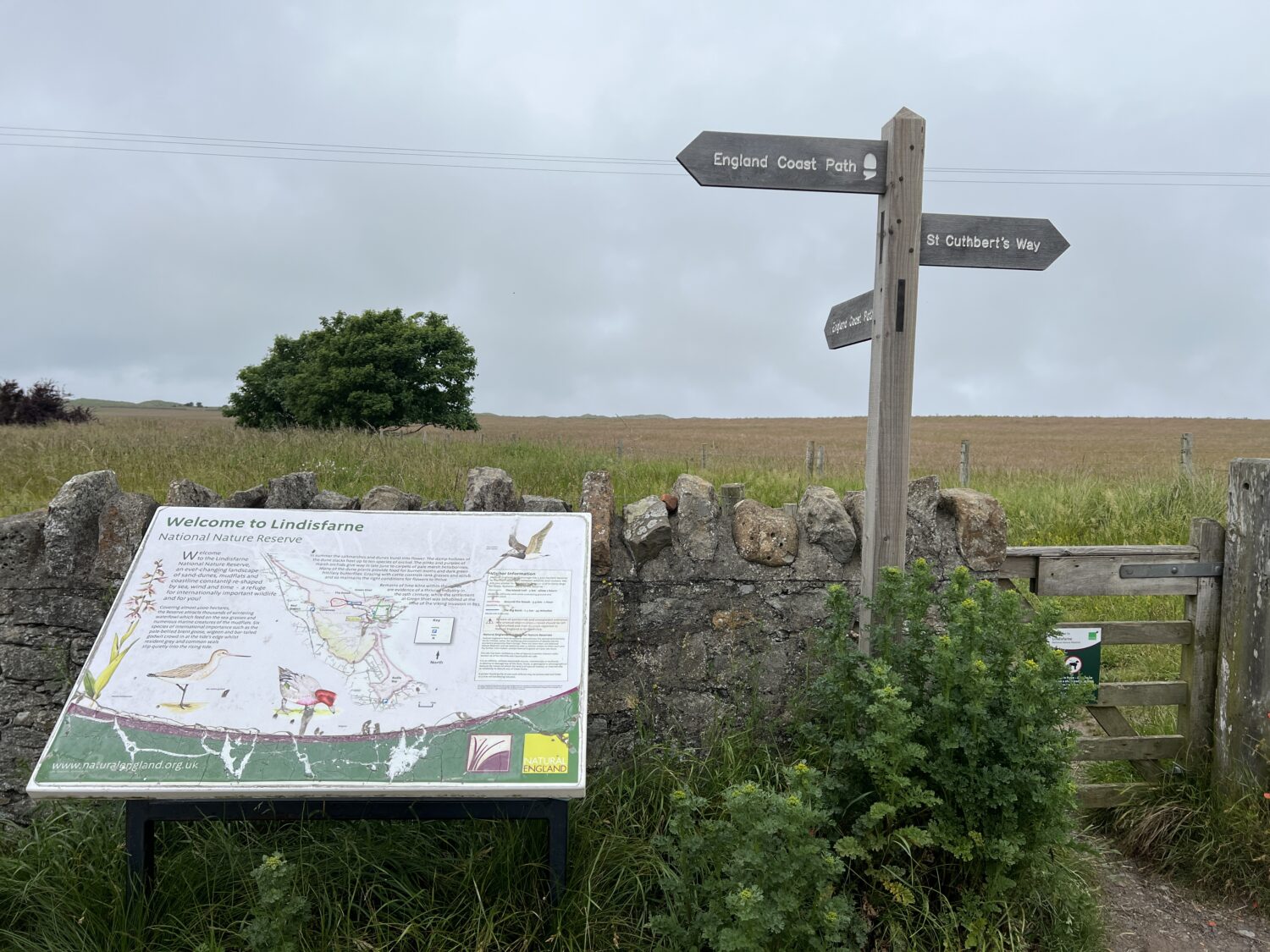
I also noticed an adjacent sign advising that there were wildlife monitoring cameras in operation and that the area was designated ‘Lindisfarne National Nature Reserve’. But considering this part of the island was well away from the village, I wondered if the majority of people that would be in this area would most likely be those interested in the natural world, who would already understand the importance of conserving this area. This illustrates just how dedicated the residents of Lindisfarne are to maintaining their island as they are ensuring that everyone who visits the island is properly informed on how to keep this area safe.
Further along, I then reached a ‘Welcome to Holy Island’ sign, which clearly shows how the residents want to protect their village. I was struck by the emphasis of the word ‘protect’ on the sign. The reason for this choice of wording became more apparent when I got into the village as it was incredibly busy with tourists, school trips and the residents themselves. With this level of visitors there needs to be measures in place to minimise unwanted repercussions such as litter, traffic and harm to the natural environment. It is also clear how the visitors are being managed with signs directing them towards toilets, parking and the attractions. I had also noticed that just before arriving at the village, there was an entry restriction sign of 300 yards. This made me appreciate how much the residents need to protect where they live and the level of passion that they must feel as guardians of their island.
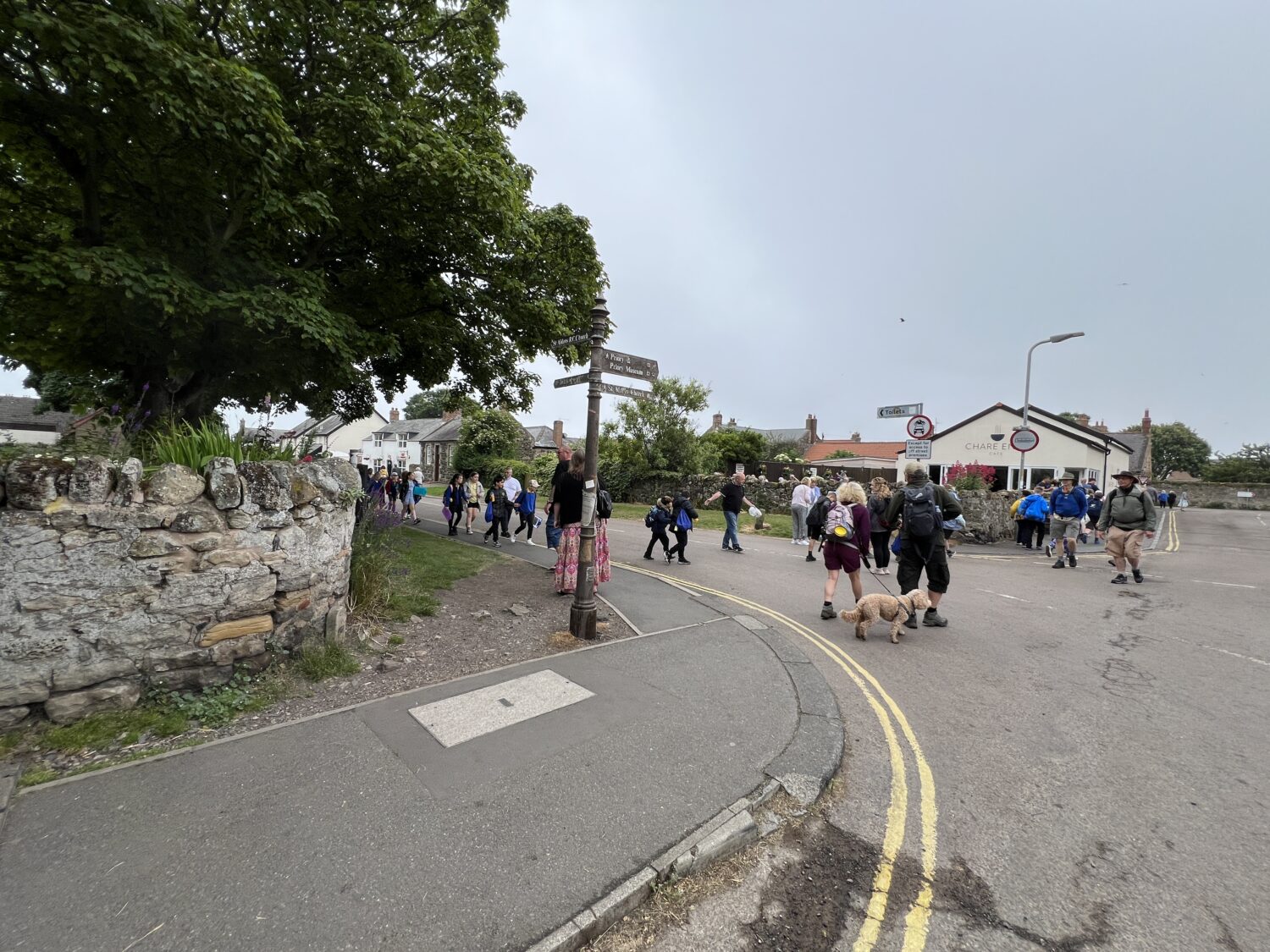
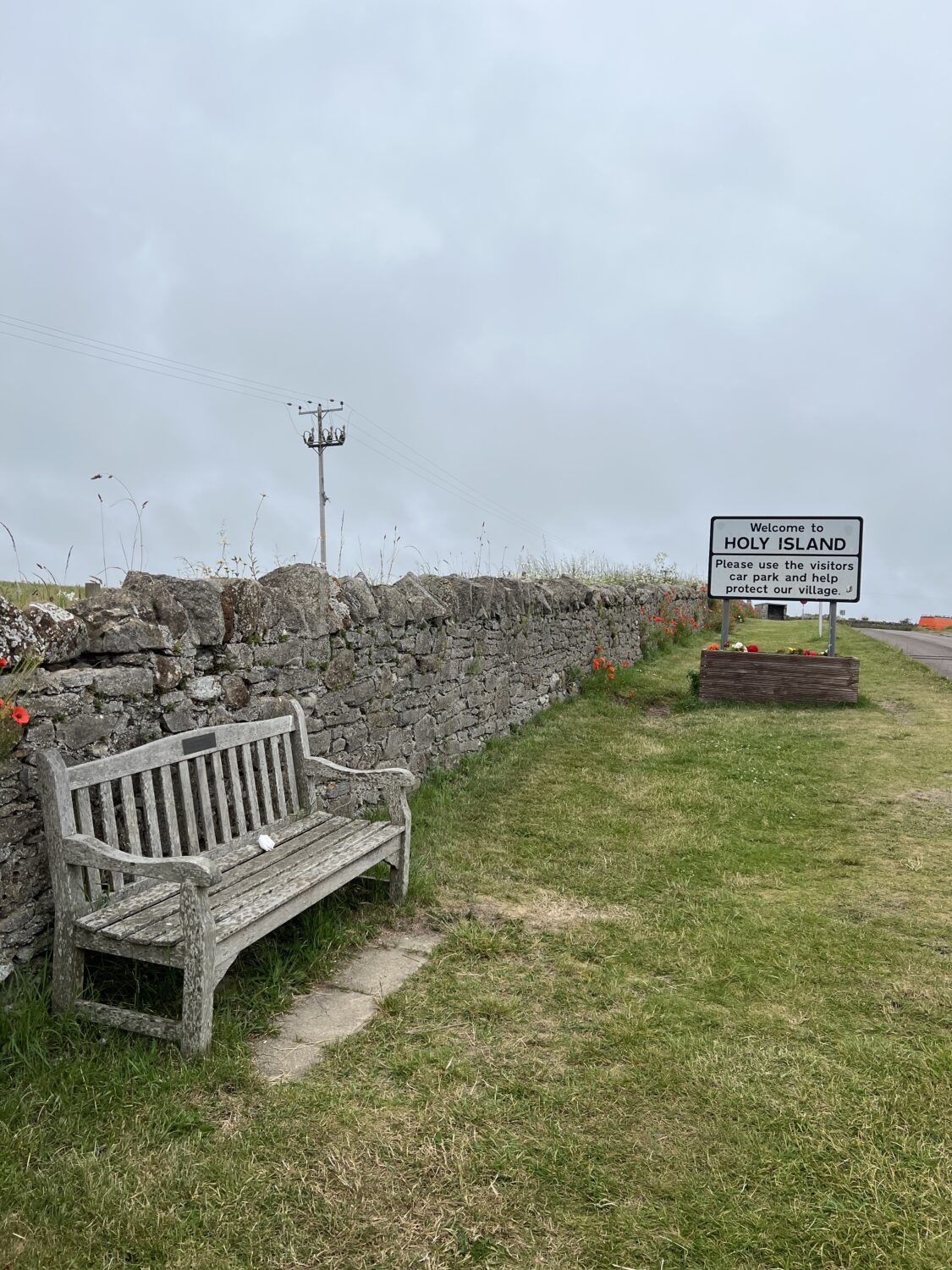
Naturally, I did some tourism of my own to see the wonderful sights of Lindisfarne. I particularly enjoyed the views of Lindisfarne castle and towards St Cuthbert’s Island. The rich historical, cultural and spiritual heritage is highly atmospheric and as you can see in the picture of St Cuthbert’s retreat below, I am not the only one who thinks so as there was a surprising number of people visiting this religious landmark.
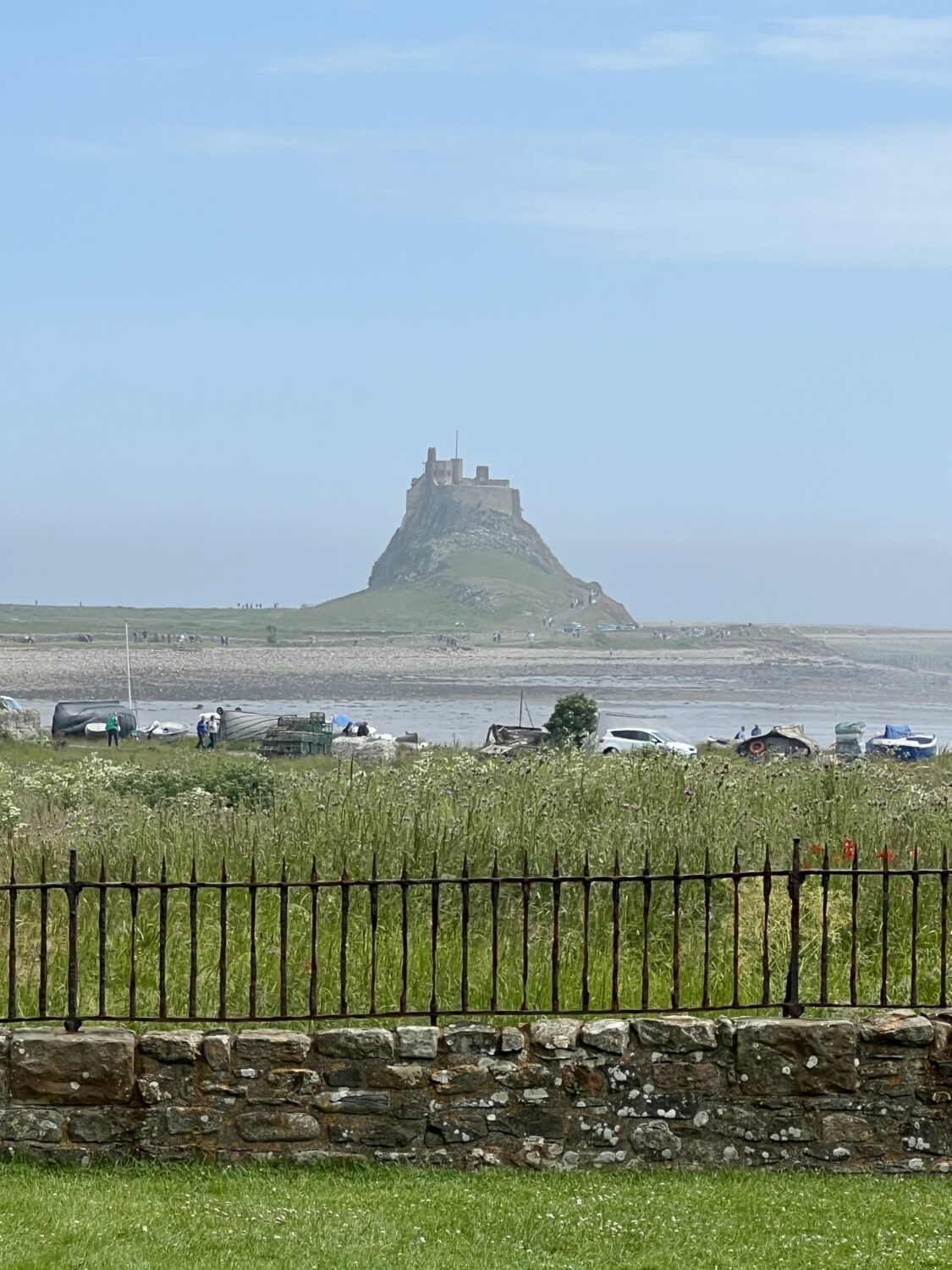
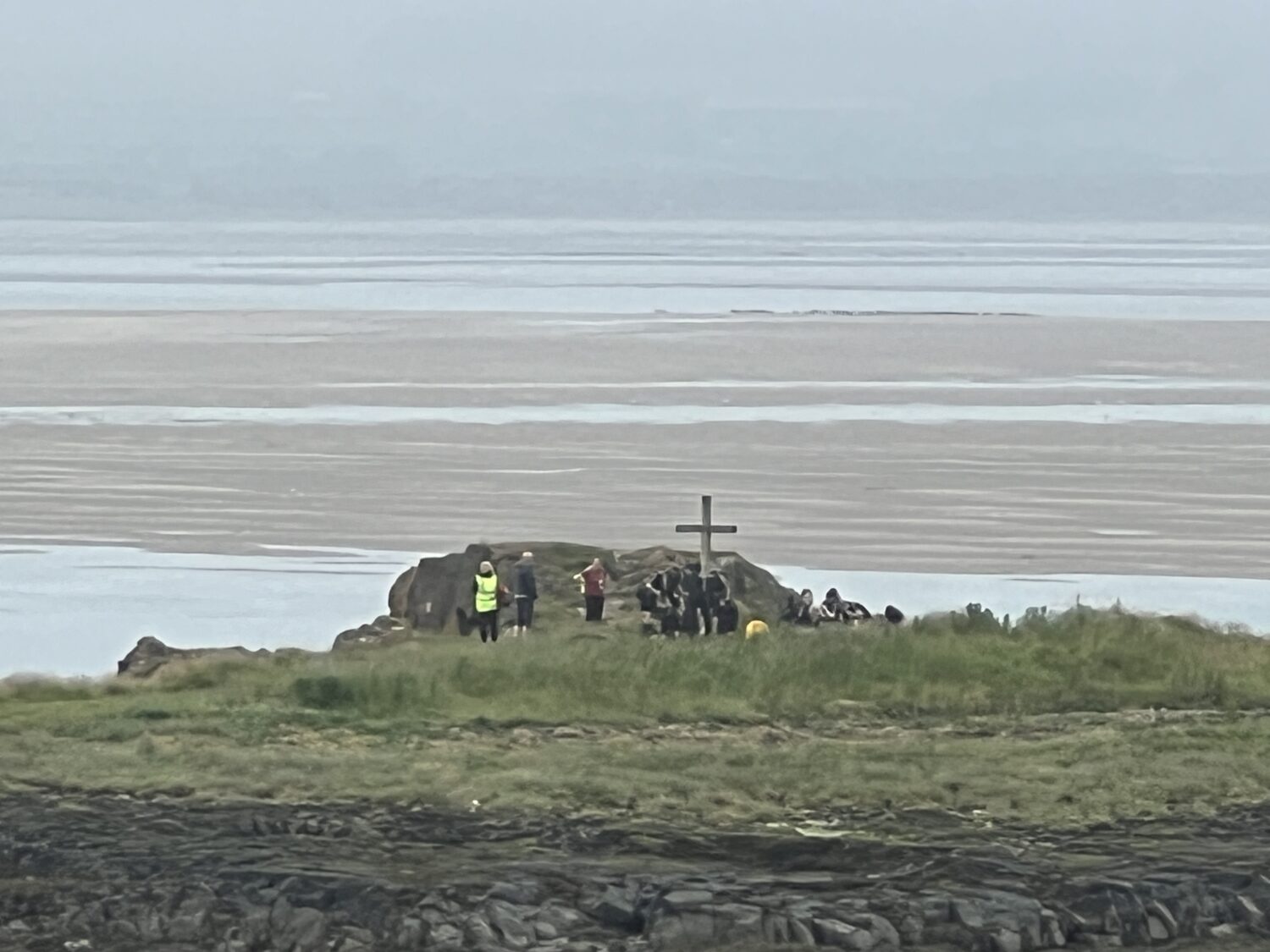
I especially wanted to see what information was available about the wildlife on Holy Island, so I went to the Lindisfarne Visitor Centre to see how ecology and conservation were being presented directly to the visitors. When I arrived at the entrance I was surprised how quaint the visitor centre was: – if I was not looking out for it I would have easily walked past it
The sign outside does list what kind of information you can find in here, most of which was about the history of the island, but declares little about the wildlife and conservation work being done. Upon entering the centre, I was immediately met with a gift shop filled with the usual tourist souvenirs, but also there was a lot reflecting Lindisfarne’s history. I had to look quite hard to find anything to do with ecology, however there were some ecology books there. Admittedly, these were on the more expensive side but they were a fantastic source of information, one of which was written by the hosts of the orchid walk!
At the back of the gift shop and for a small fee, you can enter the 3 sections (Ecology, Viking history and Lindisfarne gospels) where there are a series of interactive displays. I was pleased that the wildlife section was the first I encountered! This payment scheme could deter people from entering the exhibitions, but is necessary to keep the centre running. One of the first displays I saw was a 3D map of the island, with an introductory video and a series of buttons with interactive lights, showing you the different types of landscapes on Lindisfarne. I feel that this is a great way to attract people to learn more about the ecology of the island. Having interactive displays in a place like this is captures the attention of visitors more directly than having to read information panels, as perhaps not as many people would take the time to read them. However, next to the 3D map of the island, there is an information board describing how each of these habitats are important for wildlife on the island. This panel is very well written, but in my opinion, is a slightly dated approach to conveying the island’s information. Despite this, it was clear to see that the organisations that had put these boards together had put a lot of time and effort into them. The photographs and typography were carefully considered and showed how much the people behind the exhibition take pride in the flora and fauna of the island.
This theme of both interactive displays and information boards carried on throughout this area, with an interactive bird display. When a button is pushed, a bird call is played and it teaches you five different calls of birds on the island. I really enjoyed this presentation of wildlife, as it delivers the information about the bird’s in an engaging way, not just using text.
Going around the rest of the visitor centre was very interesting too, learning about the islands history was highly engaging and it enhanced my experience of not only the visitor centre itself, but for the whole island too. It was a really lovely experience and well worth the small entrance fee.
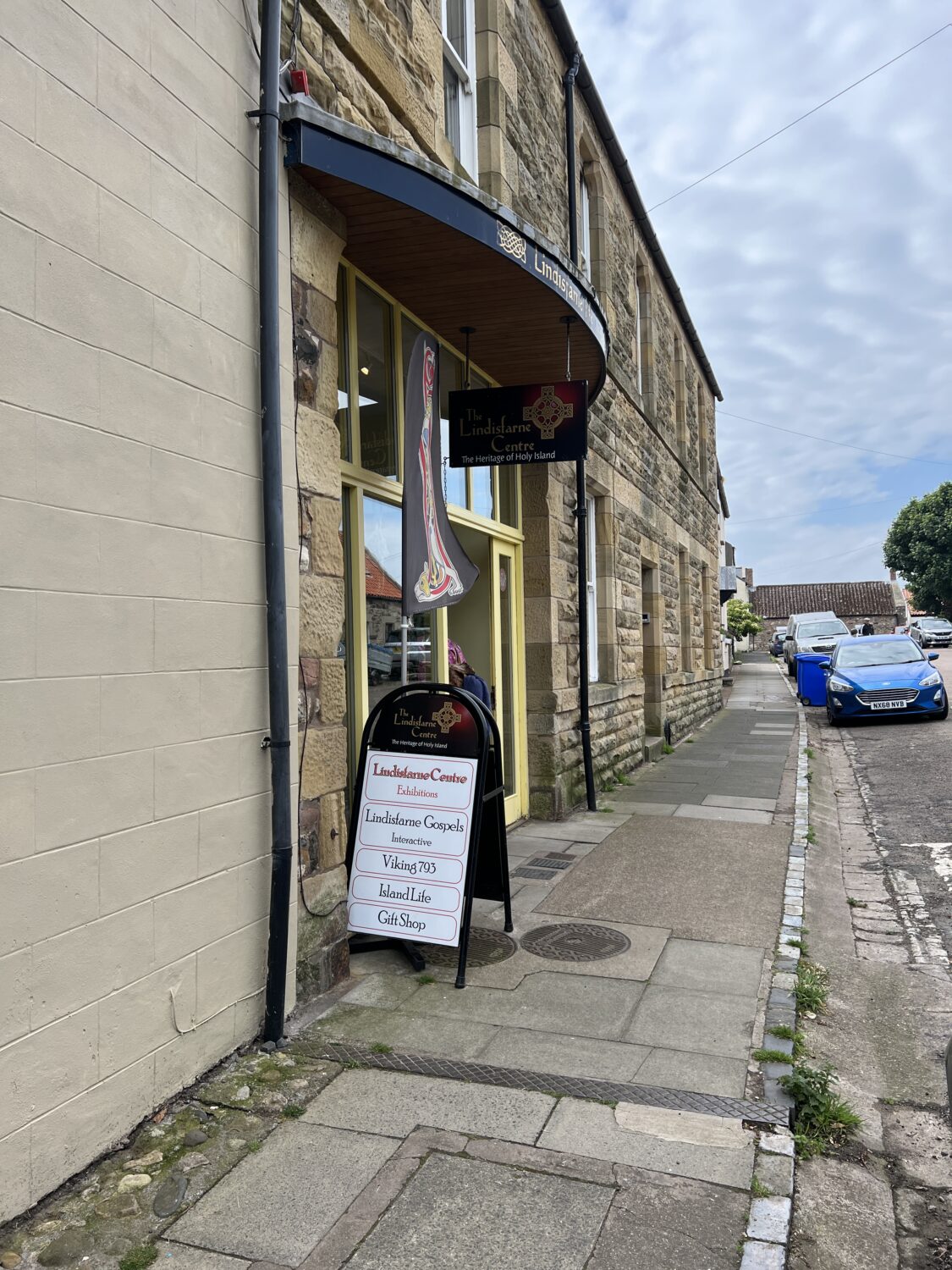
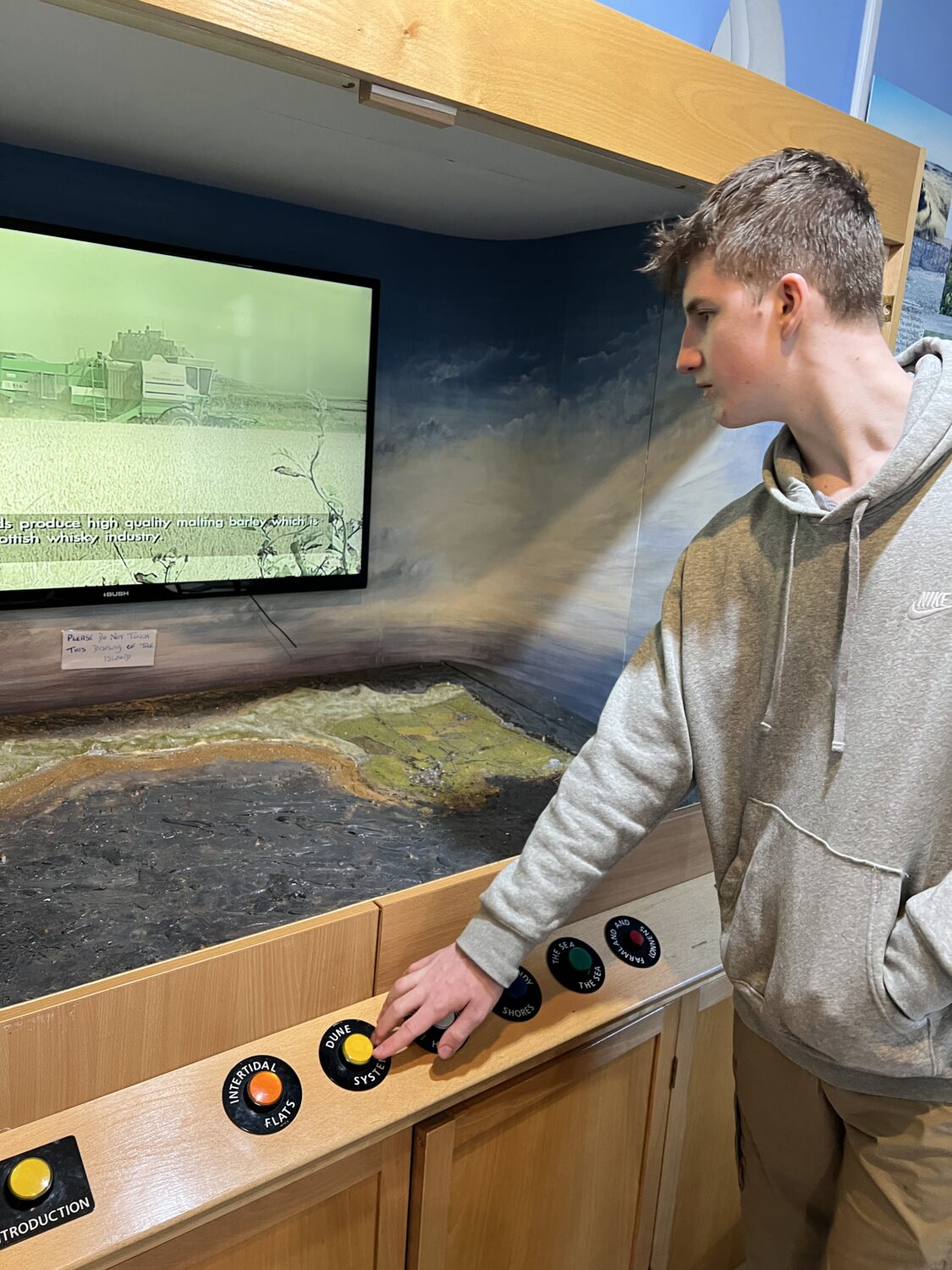
Walking towards Lindisfarne Castle, I noticed another building, called ‘Window on Wild Lindisfarne’, designed to engage the visitor with the wildlife of Holy Island. This building captured my attention because it sat so quietly in landscape so that I hardly knew what it was at first. Initially, it did not give me the impression from the outside that it had anything to do with wildlife, although the sign outside was intriguing. I was surprised that on the inside it had a much different feel than I was expecting. It was interesting to compare the sign here to the Lindisfarne Visitor Centre sign. The Window on Wild Lindisfarne building is contemporary and purpose-built, with carefully considered elements, designed to enhance the visitor’s viewing of the wildlife in the Rocket Field area of Lindisfarne.
There is a strong contrast in how the visitor experiences wildlife in these two buildings. Walking through the dark corridor lined with large photographs and quotations led to quite a revelation when I entered the main room, which was large and brightly lit by the huge viewing window. The quotes lining the walls showed how much the local community and visitors value the area and the view into the landscape of Lindisfarne was fantastic. There was also a number of information boards by the window outlining the different types of wildlife that can be seen here.
This is a place to stand, observe and contemplate: there are no buttons to press and no sound recordings. One thing that I thought was interesting about this building was the lack of interior seating. Surely if it’s purpose is for people to experience wildlife on the island it should be as accessible as possible, particularly for the elderly and visitors who want to spend longer periods of time there. Maybe this room is used as an educational resource for schools, in which case it wouldn’t be as calm and peaceful as when I experienced it!
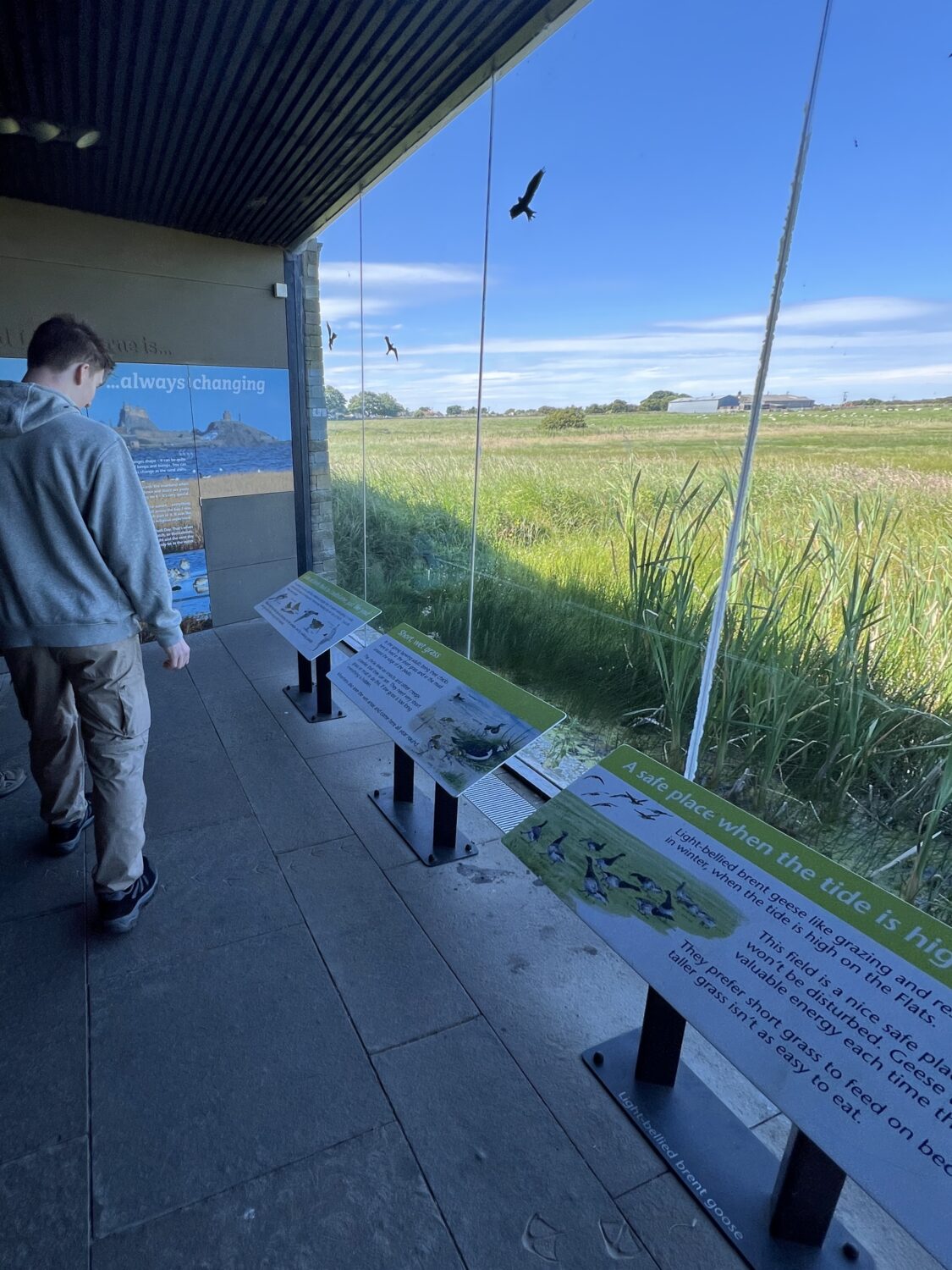
To summarise, areas as rich in biodiversity, such as the island of Lindisfarne need to be protected. It is clear that a lot of care has been taken to not only instruct visitors on how to behave, but also to explain why it is necessary that they act to preserve the natural treasures of Holy Island. Therefore, I was pleased to see all of the measures the local people have put in place in order to minimise this damage to their island from such high visitor numbers.
Places like the Lindisfarne Centre and the Window on Wild Lindisfarne portray wildlife and conservation in very different ways, but both are necessary in order to show why protecting these areas are of key importance and I am looking forward to visiting again in the near future. Arriving at the beginning of the orchid study visit, I was not anticipating this turning into a whole day spent considering general ecology and wildlife conservation across Lindisfarne! This proved to be an inspirational, challenging and enjoyable day and I will be taking back many new ideas to my studies at university this autumn.